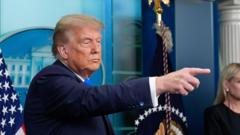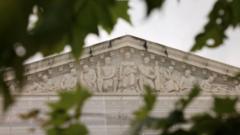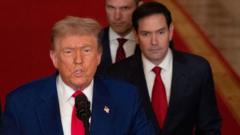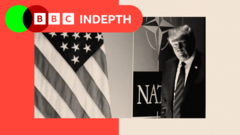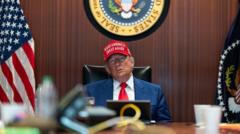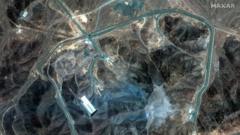The Supreme Court's ruling empowers President Trump by limiting lower courts' ability to block executive orders, setting the stage for potential legal battles and broader presidential authority.
Supreme Court Ruling Strengthens Executive Power for Trump and Future Presidents
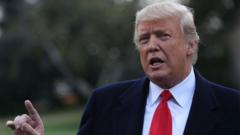
Supreme Court Ruling Strengthens Executive Power for Trump and Future Presidents
The recent Supreme Court decision allows President Trump to implement controversial executive orders, including ending birthright citizenship.
On Friday, the Supreme Court delivered a pivotal ruling favoring Donald Trump, allowing him to wield greater power as president and setting a significant precedent for future leaders. Trump, visibly elated at a White House press conference, hailed the decision as a "big, amazing victory" for the Constitution and the separation of powers. Central to the court's ruling is its endorsement of Trump's executive order to abolish birthright citizenship, something he has argued against for years.
In a move that could reshape immigration policy, the Supreme Court sanctioned Trump's decree to end the automatic granting of citizenship to those born on U.S. soil, enabling the administration to move forward with its plans. However, implementation could face complications, especially in states governed by Democrats that may be resistant to comply with such changes. Justice Amy Coney Barrett, representing the majority opinion, indicated that states could still challenge the order in lower courts, potentially leading to extensive legal battles.
The court's decision not only affects the contentious birthright citizenship issue but also strengthens Trump's hand in pursuing various policies that have faced injunctions from lower judicial authorities. This ruling may prove crucial as the Trump administration has encountered 25 blocked actions since his inauguration, spanning issues from immigration reforms to government funding cuts.
Moving forward, the ruling fosters a climate in which presidents, irrespective of their party affiliation, can execute policies without facing immediate judicial roadblocks. While the Supreme Court emphasized the need for lower courts to assess the legality of these executive orders, the increased latitude will likely lead to expedited decision-making processes for presidential initiatives.
Moreover, Attorney General Pam Bondi noted that the Supreme Court will revisit the birthright citizenship question in its upcoming session, indicating that while Trump may push ahead, the debate is far from over. The broader implications of this ruling mean that presidents — both Trump and those who may follow — will enjoy enhanced authority to enact their agendas, even in the face of judicial scrutiny. The judicial landscape remains fraught with tensions, but it is evident that the balance of power has tilted in favor of the executive branch.



